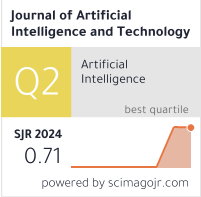Estimation of Low Nutrients in Tomato Crops Through the Analysis of Leaf Images Using Machine Learning
DOI:
https://doi.org/10.37965/jait.2021.0006Keywords:
agriculture, image processing, deep learning, computer vision, color analysisAbstract
Tomato crops are considered the most important agricultural products worldwide. However, the quality of tomatoes depends mainly on the nutrient levels. Visual inspection is made by farmers to anticipate the nutrient deficiency of the plants. Recently, precision agriculture has explored opportunities to automate nutrient level monitoring. Previous work has demonstrated that a convolutional neural network (CNN) is able to estimate low nutrients in tomato plants using images of their leaves. However, the performance of the CNN was not adequate. Thus, this work proposes a novel CNNbased classifier, namely CNN+AHN, for estimating low nutrients in tomato crops using an image of the tomato leaves. The CNN+AHN incorporates a set of convolutional layers as the feature extraction part, and a supervised learning method called artificial hydrocarbon network (AHN) as the dense layer. Different combinations of the architecture of CNN+AHN were examined. Experimental results showed that our best CNN+AHN classifier is able to estimate low nutrients in tomato plants with an accuracy of 95:57% and F1-score of 95:75%, outperforming the literature.
Metrics
Published
How to Cite
Issue
Section
License
Copyright (c) 2021 Authors

This work is licensed under a Creative Commons Attribution 4.0 International License.





